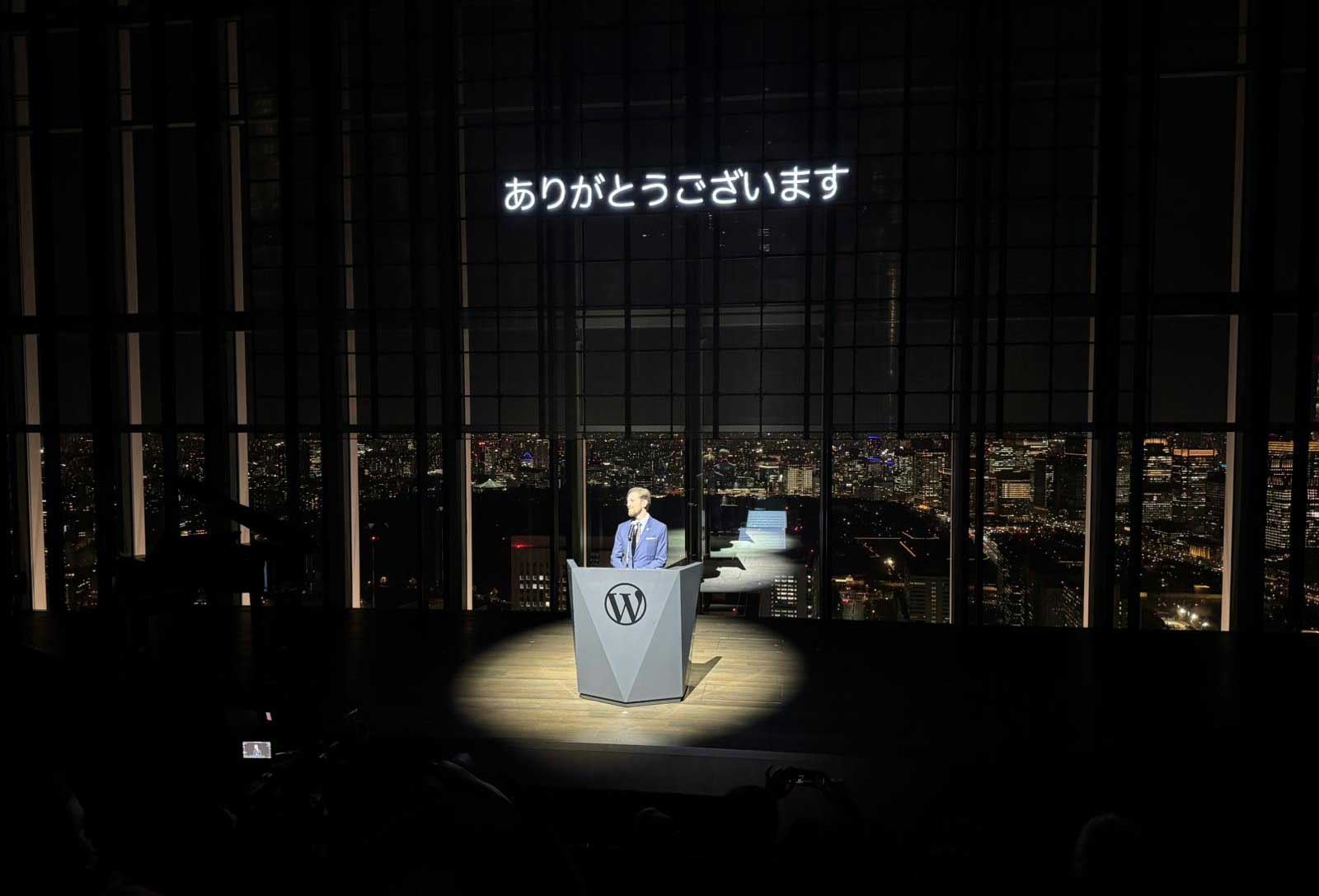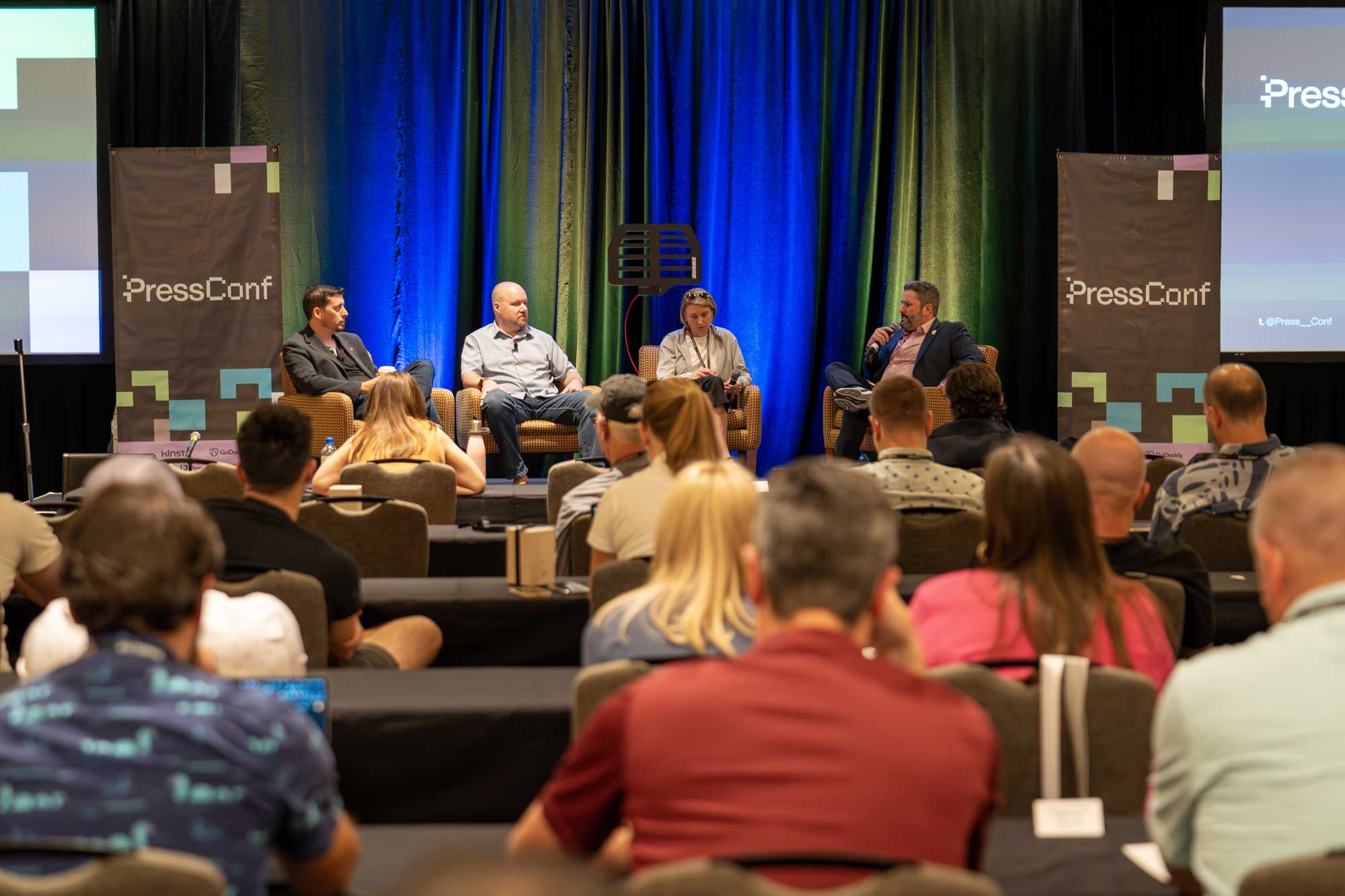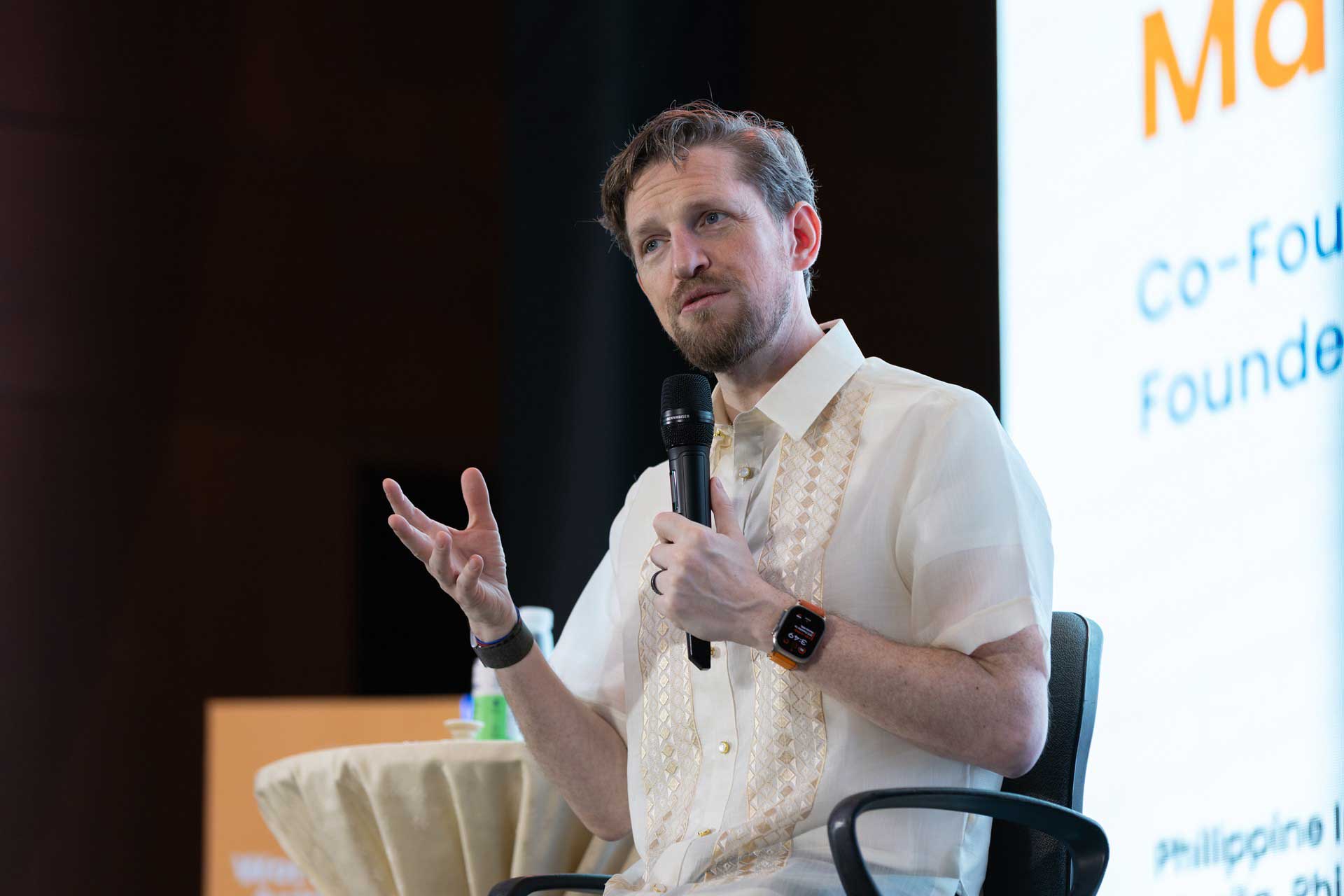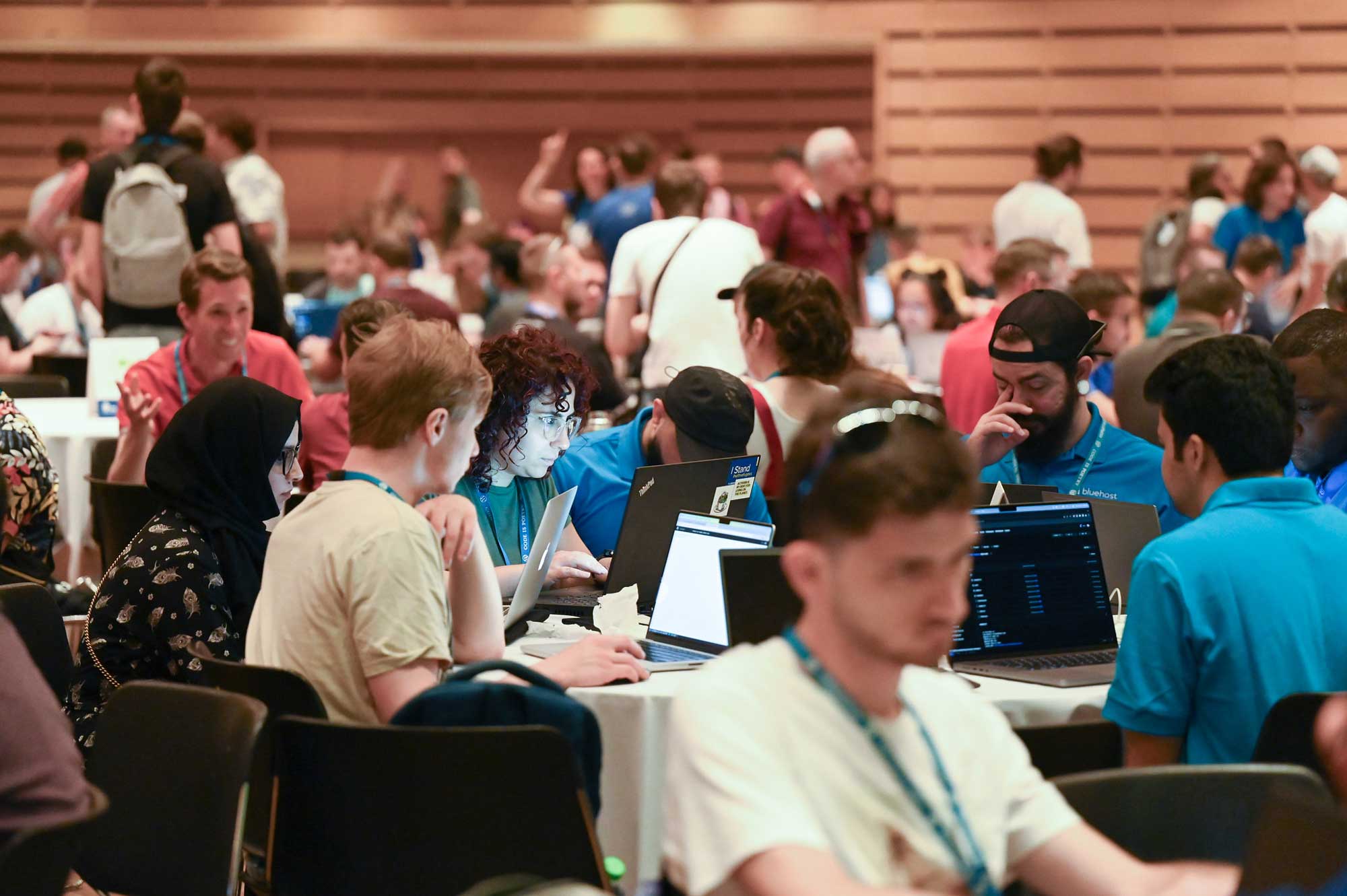WordPress co-founder Matt Mullenweg delivered his annual State of the Word address from Tokyo’s Node Hall on Monday, marking the second time the event has been held outside North America, following last year’s stop in Madrid. The event opened with a performance by pianist Aiko Takai, setting a reflective tone for an address that celebrated Japan’s deep connection to WordPress.
Mullenweg drew parallels between Tokyo’s history of legacy and innovation and WordPress’s evolution, sharing his fascination with Kansei engineering—a Japanese design philosophy focusing on how a product feels to use. He connected this idea to WordPress’s ongoing development, emphasizing the project’s goal to resonate with users instinctively.
Japan’s role in WordPress’s history was a key focus, with Mullenweg highlighting how the country became the first to localize WordPress. In 2003, Japanese user Otsuka Kare manually edited tens of thousands of lines of code to create the first localized version. This effort not only made WordPress accessible to Japanese users but also inspired the creation of a formal translation framework, paving the way for WordPress’s global accessibility.
Mullenweg also celebrated the creation and impact of Wapuu, WordPress’s beloved mascot. Designed in 2009 by Kazuko Kaneuchi and released under the GPL license, Wapuu has since spread to every WordCamp globally, with communities adding local flair—like a French Wapuu holding a baguette—making WordPress feel “warmer, more fun, and approachable.”
WordPress’s continued global dominance
WordPress’s return to growth took the spotlight in Mullenweg’s address, as he quipped that “WordPress doomers” would be disappointed to see the platform thriving once again. After a couple of flat years—with market share hovering at 43.2% in 2022 and 43.1% in 2023, according to W3Techs—WordPress has gained fresh momentum, now powering 43.6% of all websites globally.
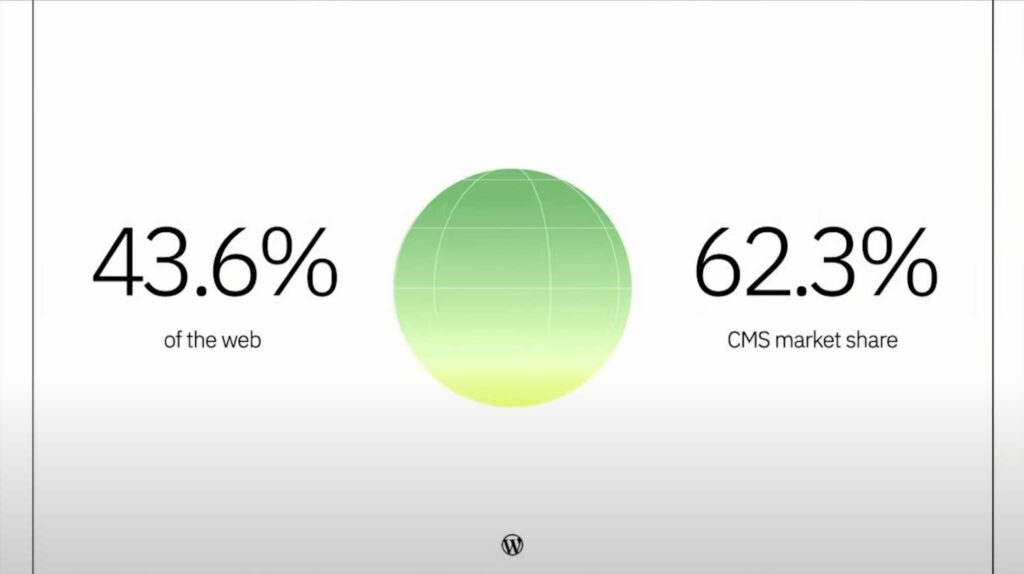
While WordPress maintains a commanding 62% market share among content management systems, this figure reflects a gradual decline from its peak of 65.2% in 2022. Despite the dip, WordPress still far outpaces its nearest competitor, Shopify, which trails far behind at 6.6%.
Japan has proven to be a success story for WordPress, powering 58.5% of all Japanese websites and commanding 83% CMS market share—a staggering 31 times Shopify’s footprint. “Y’all really love WordPress here, so thank you,” Mullenweg told the audience.
WordPress’s growth extends beyond market share. WordPress core saw nearly half a billion downloads over the past year, while plugin downloads are projected to hit 2.35 billion by the end of 2024, a 20% year-over-year increase.
Mullenweg praised the Plugin Review Team for clearing the backlog and slashing review times from 79 days to zero. With the introduction of the Plugin Check plugin, submission quality has significantly improved, cutting issues by 41% and enabling the team to approve 138% more plugins each week.
Over the past 12 months, more than 1,700 new themes were uploaded to WordPress.org—1,000 of them block-based—marking an increase of 300 from last year and setting a new record.
Gutenberg’s evolution: focus shifts to responsive design
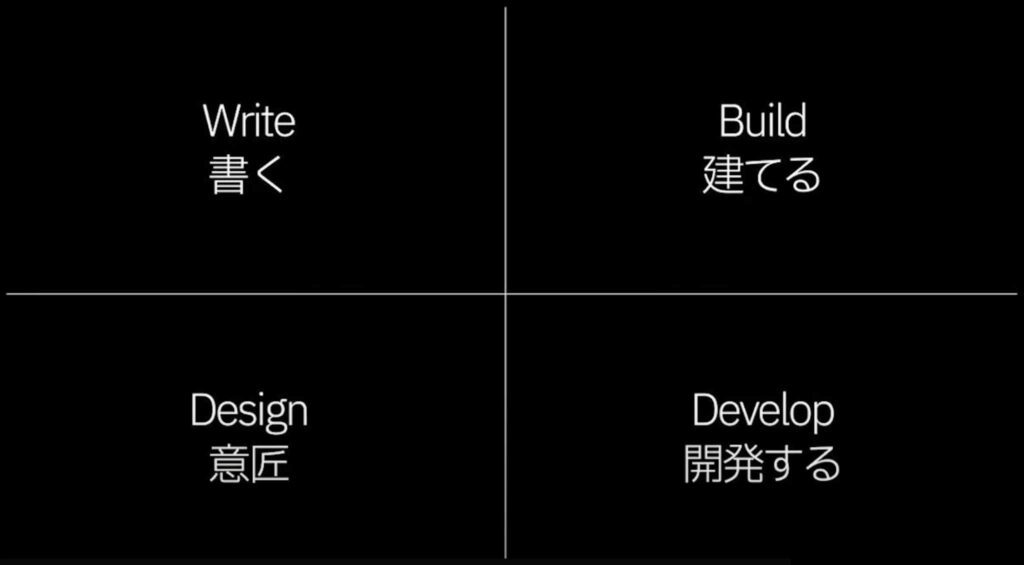
Matías Ventura, the lead architect of WordPress, provided an update on the block editor’s progress, focusing on its evolution across four key areas: write, design, build, and develop. While much of what he shared reflected ongoing refinements, Ventura announced that responsive design will be a key focus in 2025, addressing a key feature that has long been lacking in WordPress.
Ventura shared plans to introduce tools that allow users to customize layouts for specific breakpoints, enabling changes for mobile, tablet, or desktop views. The aim, he said, was to strike a balance between ease of use for non-technical users and the flexibility developers need to fine-tune responsive behavior. “We need to come up with something that works for every user. So it has to be simple for regular users to modify, and it has to be flexible enough for developers to accomplish things,” Ventura said.
He also revisited improvements to the writing experience, including the enhanced distraction-free mode, and highlighted refinements to drag-and-drop functionality that make it easier to rearrange blocks or place images side by side intuitively.
In the design space, Ventura showcased tools to separate content editing from layout adjustments. Features like Zoom Out mode and new editing modes also ensure users can update content without inadvertently breaking designs—an effort to simplify the editing experience for site owners and clients.
On the build side, Ventura touched on Block Bindings, which allow blocks to pull content dynamically from custom fields, giving users a more intuitive way to manage data-driven sites. He also showcased progress on Data Views, which make it easier to display and manipulate structured content—such as grids or tables—directly within the editor.
For developers, Ventura highlighted ongoing improvements, including the block template registration API, simplifying how plugins define and activate templates. He also talked about the Interactivity API—a feature of last year’s SOTW—which delivers dynamic, JavaScript-like behaviors, such as instant pagination or inline commenting, while preserving WordPress’s performance advantages through server-side rendering.
Ventura closed by emphasizing that “WordPress is for everyone,” issuing a challenge to contributors to put their minds to how WordPress could be the best writing tool, the best design tool, and offer the best developer experience.
AI in WordPress
Mullenweg briefly touched on the growing influence of AI, describing how WordPress is “laying the groundwork for something that’s pretty transformative.” He predicted that tasks that once took weeks or months would soon be completed in minutes or seconds, all while giving users full creative control.
To showcase AI’s potential, he highlighted a recent WordPress Speed Build Challenge between Automattic-sponsored contributors Ryan Welcher and Nick Diego. Welcher built his site manually, while Diego used AI tools for assistance. The AI-assisted approach won decisively, demonstrating how AI can dramatically accelerate workflows. “It’s a great example of how AI is not going to replace us, but it can actually help us get more done, faster,” Mullenweg said.
This focus on AI follows Automattic’s recent acquisition of WPAI, a startup developing AI tools for WordPress. Announced last week, the WPAI team’s focus at Automattic includes developing AI standards for WordPress, improving the platform’s core functionality, and creating tools that help users build and manage better websites.
WordPress community and contributor growth
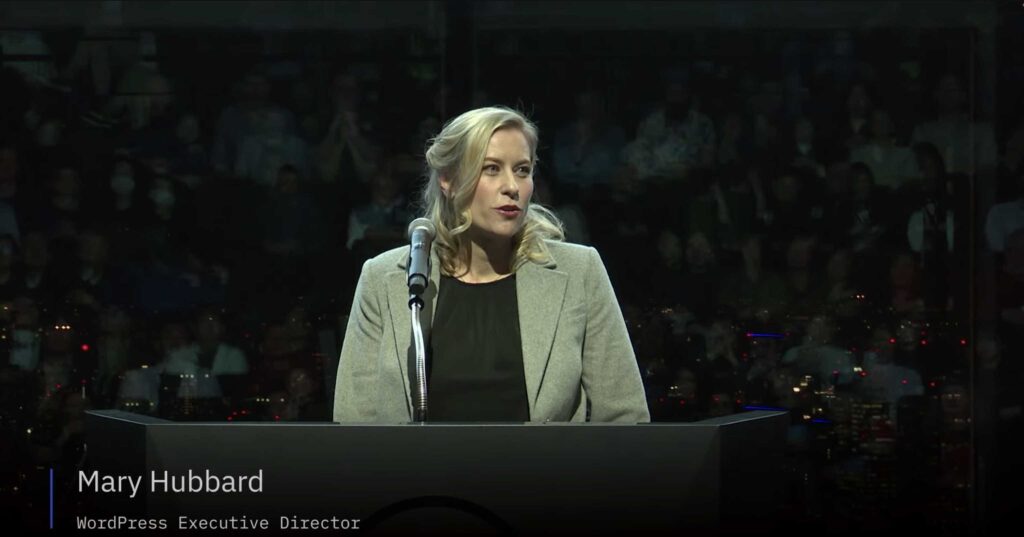
Just two months into her role as WordPress Executive Director, Mary Hubbard took to the stage to talk about the strength and resilience of the WordPress community while addressing one of the biggest challenges in the project’s history: Mullenweg and Automattic’s ongoing legal battle with WP Engine. Hubbard made it clear that defending WordPress’s open-source values is a priority, stating, “I believe that when you choose WordPress, you should get WordPress.” She underscored the need to protect the platform’s integrity, adding, “We’ve come too far to stand by as WordPress is exploited or watered down for short-term gains at the expense of the long-term needs of the community.”
One of the key achievements Hubbard shared was the transformation of Learn WordPress, WordPress.org’s free educational platform. Structured learning pathways now offer 24 lessons for beginners and 59 lessons for aspiring developers, making it easier than ever for users at all skill levels to grasp WordPress.
Beyond education, Hubbard spotlighted the achievements of WordPress communities in India and Latin America. WP Campus Connect in Ajmer is introducing WordPress to college campuses in India, giving students hands-on digital skills and career opportunities. Meanwhile, the Latin America Reactivation Project has reignited nine dormant meetups, launched new communities across the region—including in Buenos Aires and Guatemala City—and laid the groundwork for three new WordCamps planned for 2025.
She also celebrated WordPress’s growing virtual reach. The WordPress YouTube channel has surpassed 61,000 subscribers since Jamie Marsland took the reins as WordPress.org Head of YouTube. WordPress content across all platforms now reaches 2.27 million followers, and online streams of major WordPress events have attracted 28.5 million viewers.
While Hubbard’s remarks rightly celebrated community achievements, they stood in contrast to her first public call with the WordPress community last month, during which she faced tough questions about WordPress’s challenges. She also acknowledged the frustration felt by many amid Mullenweg’s feud with WP Engine, even apologizing for the alienation many feel.
Japan’s thriving WordPress community
Junko Nukaga, a Community Team rep and WordCamp organizer, highlighted the growth and maturity of the Japanese WordPress ecosystem, citing milestones like DigitalCube’s recent IPO. She noted that WordPress’s economic impact in Japan is valued at over 100 billion yen.
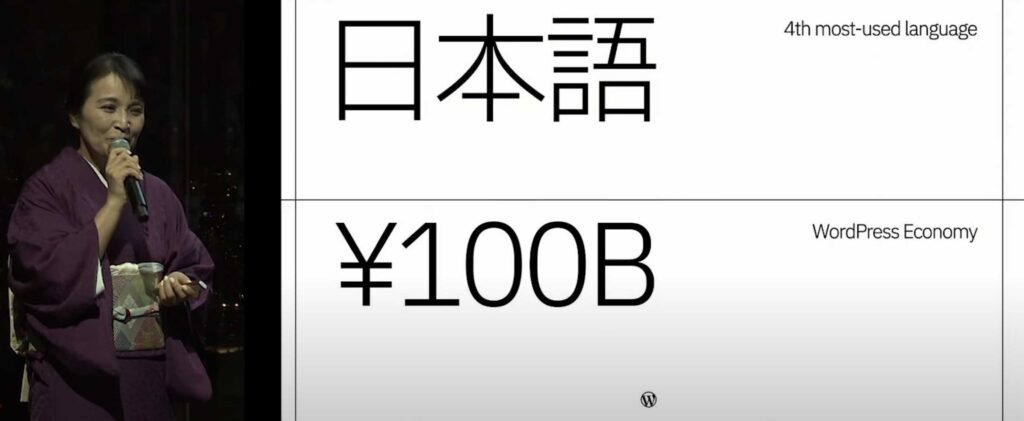
Nukaga also recognized individual contributors, such as Takayuki Miyoshi, whose Contact Form 7 plugin now boasts more than 10 million active installations.
Beyond the numbers, Nukaga celebrated the dedication of local contributors and organizers. The Japanese WordPress community now includes 26 active meetup groups with a combined membership of over 11,000 people. She credited this growth to initiatives like Japan’s silent translation events, held every Friday night, which have ensured WordPress remains accessible to Japanese users. Now in its fifth year, the project reflects the steadfast commitment of Japanese contributors to improving WordPress for their local audience.
Mullenweg recognized standout contributor Aiki Hamano, a core committer who made 774 contributions to WordPress core this year, earning 162 props for WordPress 6.5, 274 props for 6.6 as the second-highest contributor, and taking the top spot for 6.7 with 338 props.
Other key contributors included Akira Tachibana, an active member of the Documentation Team, and Nukaga herself, who was honored for her leadership in community organizing. Thirteen Japanese contributors were responsible for 5.4% of WordPress 6.6’s development, highlighting Japan’s growing influence on the project’s global evolution.
Data liberation and WordPress Playground
Mullenweg briefly spoke about Data Liberation, a project he announced during last year’s SOTW that is focused on ensuring content is fully portable and accessible across platforms. He showcased progress, including the ability to drag and drop ePub files into WordPress, where they’re automatically converted into usable content, ensuring seamless integration across platforms.
Mullenweg also highlighted WordPress Playground, a browser-based feature that allows users to run WordPress without installing it, eliminating barriers for new users and quick prototypes. This, he said, is part of WordPress’s broader effort to give users full control over their content, wherever they choose to publish.
Q&A
The floor was opened to one of the briefest Q&As in SOTW history, with Mullenweg answering just four questions.
Questions from the audience, including Tokyo Vice author Jake Adelstein, covered the future of blogging, WordPress performance, the impact of AI search, and what democratizing publishing means today.
Panel discussions
The event continued with two panel discussions:
- Publishing in the Open, featuring Mieko Kawakami (Japanese Author and Poet), Craig Mod (author of Things Become Other Things), and Mullenweg.
- The Future of WordPress in Japan and Beyond, featuring Hajime Ogushi (CEO at mgn), Genki Taniguchi (Senior Director at SAKURA internet Inc.), and Mullenweg.


